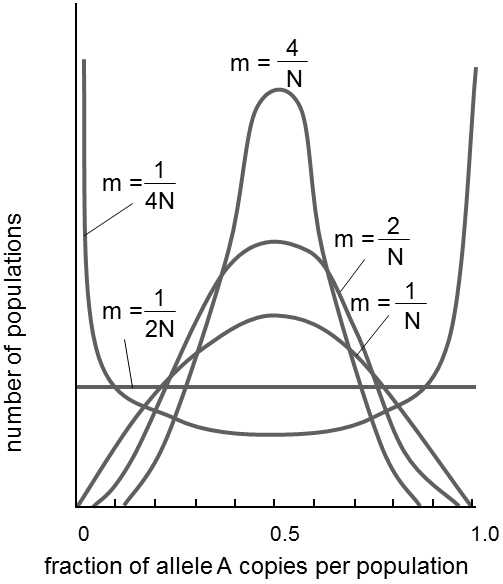V.2.3 The influence of genetic drift can be limited very effectively by migration.
If a certain gene flow mediated by exchange of migrants does occur between individual isolated populations, the effectiveness of the action of genetic drift is greatly limited (Fig. V.7).

Fig. V.7. The effect of migration on genetic drift. In a population of heterozygotes Aa divided at time t0 into a large number of separate populations with size N, over a few generations the action of genetic drift creates a state where the numbers of individual small populations with certain frequencies of the studied alleles will have U-shaped distribution (see also Fig. V.3). Thus, one or the other allele will be fixed or almost fixed in most populations and both alleles will be present with similar frequencies in only a few populations. However, if gene flow occurs between the individual populations with an intensity of at least 1 migrant in two generations, the relevant distribution will have bell shape and the individual alleles will practically not become fixed because of drift in the individual populations.
It is interesting that, without regard to the size of the population, the migration of approximately one migrant per generation is sufficient to substantially limit fixation of new mutations by genetic drift in the individual subpopulations (see also VII.2.4.1).
As such a low frequency of migrants can very readily be overlooked by the field biologist, the theoretically calculated rate of fixation of neutral mutations in a certain species can differ very significantly from the actual values.
